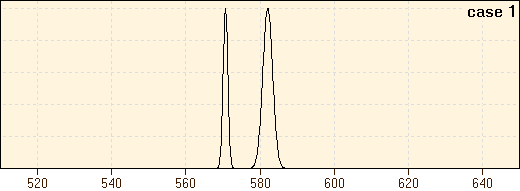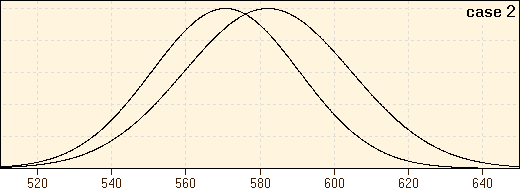| Fundamentals of Statistics contains material of various lectures and courses of H. Lohninger on statistics, data analysis and chemometrics......click here for more. |

|

Home  Statistical Tests Statistical Tests  Fundamendals Fundamendals  The Term "significant" The Term "significant" |
|||||||
| See also: Quantiles, Level of Significance | |||||||
The Term "significant"In statistics we often use the term "significance". According to my experience "significance" is used carelessly in many circumstances, and is little understood. Basically, the word "significance" comes from the Latin word significans which means "clear" or "distinct". A certain observation is thus considered to be of significance if it can be recognized easily. Speaking in more statistical terms, we connect the "level of significance" with the probability of an observation to occur. A simple example should clarify this:
Thus, the meaning of the term significant depends on the width of the distribution of the measured values. If we abstract from this example, the term "significant" may be formulated as follows: a result is considered to be significant if the probability that it occurred by chance is low. In our example the difference of the means in the first case is evident, because the corresponding distributions do not overlap - which makes the odds that the measured values of the northern and the southern area origin from the same distribution actually zero. In the second case this probability is clearly greater than zero (i.e. 12%).
In order to make a precise statement on the significance of some results, statisticians have defined the level of significance which specifies the probability to conduct a type I error when performing statistical tests.
|
|||||||
Home  Statistical Tests Statistical Tests  Fundamendals Fundamendals  The Term "significant" The Term "significant" |
|||||||



